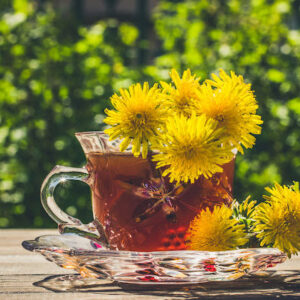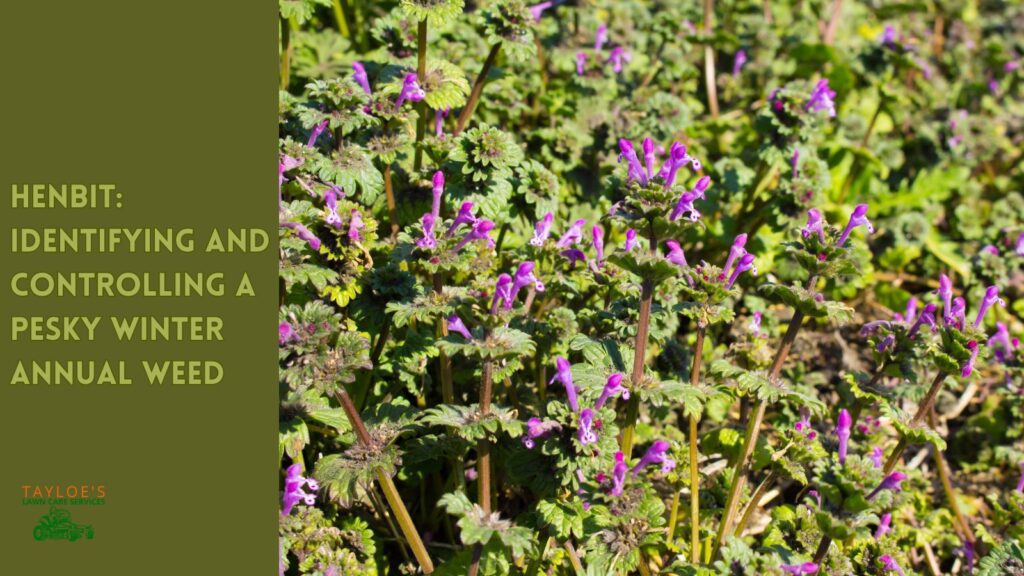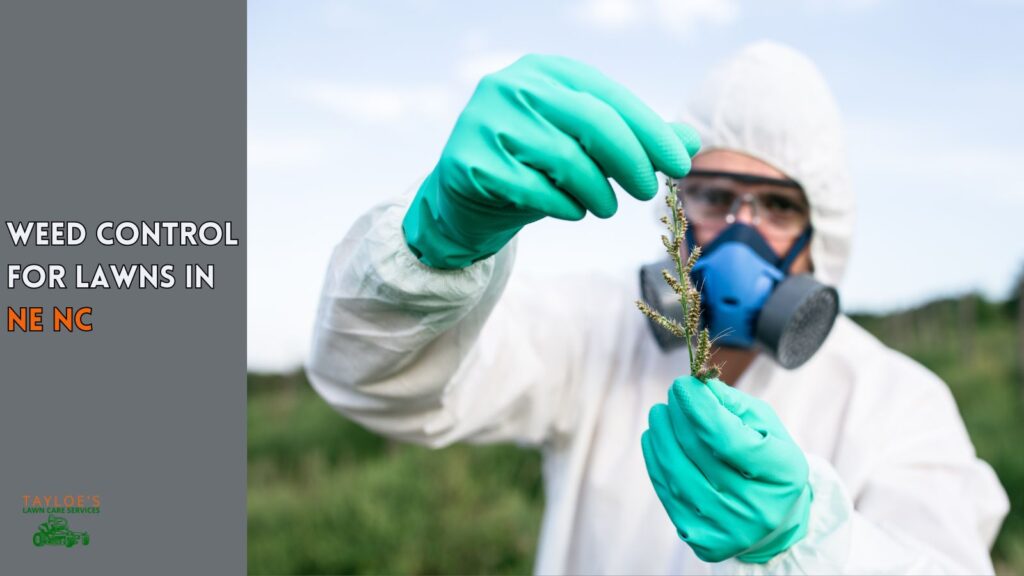Last Updated on: 16th February 2024, 07:42 am
Dandelions. To remove them or not? That’s a million-dollar question some gardeners ask themselves.
Of course, like many gardening tasks, we don’t have clear-cut guidance. We must weigh the pros and cons of each issue and decide what works best for our needs. And so we will look into the dandelion dilemma today.
This post will explore the following topics:
- What is a dandelion?
- Are dandelions good for anything?
- Dandelion nutrition.
- How to make dandelion tea.
- How do you pick and eat dandelions safely?
- Why are dandelions bad for your yard?
- The only natural way to remove dandelions safely, permanently, and without chemicals.
What is a dandelion?
The dandelion (Latin: Taraxacum officinale) is a native herb that originated in either the Mediterranean region of Europe or in Asia. It spread across the North American continent and is now a ubiquitous part of the American landscape. Although they have a sunny and cheerful flower that resembles a lion’s mane, most gardeners consider them a blight on their lawns. Conversely, herbalists covet these for their healing properties.
In fact, despite the slur, “weed,” botanists classify this hardy flower an herb, in the same family as the daisy. Although it is an edible with much nutritional value, the National Center for Complementary and Integrative Health (NCCIH) warns that few large studies can confirm any claims that it heals specific ailments.
NOTE: We are lawn care specialists, not doctors. I am not offering any medical advice but sharing the info I found while researching this topic. All information is for your general knowledge.Many articles across the internet make claims, but you should exercise caution and discuss the potential healing benefits with your doctor before you try.
Dandelion nutrition (and safe harvesting tips)
The University of Wisconsin’s Agricultural Extension office put out a dandelion fact sheet explaining that almost all parts of the plant are edible, exercising caution about consuming the roots. Although the roots are technically edible, they are a natural laxative and diuretic. Besides the roots, the milky sap that runs out of this herb contains latex. So, if you have a latex allergy, avoid eating this plant. Finally, they warn that you should only eat from an area free of lawn chemicals or pesticides. Examine the plant for insects, dead or alive, and wash your harvest before you use it.
Eating dandelion plants provides the following nutrition in one serving:
% of RDA/100 grams
- 9% of dietary fiber
- 19% of calcium
- 19% of vitamin B-6 (pyridoxine)
- 20% of Riboflavin
- 39% of iron
- 58% of vitamin C
- 338% of vitamin A
- 649% of vitamin K
How to make dandelion tea

Making dandelion tea is no different than making any other herbal tea. Here are a few guidelines for brewing a cup to enjoy.
- Harvest some dandelion flowers and leaves from an area of the yard free of pesticides, chemicals, or dog urine.
- Rinse the plant materials to remove any dirt or loose debris. Check under the leaves to make sure you don’t have bugs attached.
- Boil water.
- Pour six to eight ounces of water over the plant materials, cover it with a towel, and let it steep for two or three minutes.
- Strain into a fresh teacup. Enjoy a squeeze of lemon and enjoy.
The herb flavor is delicate and fragrant with a slightly sweet flavor.
Are dandelions good for anything?
Yes. Dandelions are “good” for three things:
- Nutritional value of dandelions: As you read earlier, these herbs provide excellent nutrition. Some herbalists even cultivate them for consumption. something.”
- Soil aeration: These herbs have a long taproot, breaking up the soil and aerating it as it grows.
- Attracting pollinators: Undoubtedly, you have seen a fat and satisfied bumblebee feasting on dandelion nectar on a spring afternoon. The yellow lion’s heads attract bees, essential partners for pollinating your lawn and garden.
Why are dandelions bad for your yard?
Despite the nutritional needs these sunny yellow flowers can meet, they are also bad for your yard. Here are the reasons why many gardeners choose to remove these herbs from their yards.
- Nutrition competition: Dandelions compete with the grass for nutrients. Because of their sturdy and rugged nature, they usually win. This struggle for nutrients often results in the yellow flowers growing tall and straight and stunted grass growth.
- Water competition. Ditto for water. You’ll find gardeners removing them, especially in hot, dry climates where every drop counts.
- Invasiveness: The puffballs of seeds blow apart in the gentlest of breezes, sowing more seeds until you see a yellow carpet instead of green grass.
- Appearance: Some people find the yellow heads punctuating their rich green grass annoying or unsightly, all a matter of preference
- Attracting bees: We also listed this as a “pro.” But people who have anaphylactic reactions to bee stings often go to great lengths to remove plants that bees find particularly attractive.
How to remove dandelions from your yard permanently (a win-win solution!)
Some websites tout “organic” methods of killing weeds. Think boiling water or salt. While these tips can be practical, you have an enormous downside–they kill everything around the weed, too. So before you go boiling your weeds, grass, and desirable plants, think twice.
On the other hand, you can invest in pre-emergent or post-emergent chemical treatments for your lawn and gardens. However, those are costly–both in terms of your wallet and environmental impact.
But wait…All is not lost.
You have one removal method left at your disposal–manually removing the dandelion, including the entire taproot. This gives you the best of both worlds. You can harvest the beneficial herb and enjoy it in tea or a dandelion green salad while ridding your lawn of the pesky and unsightly “weeds.”
This job is not for the faint of heart, it is time-consuming and takes a lot of work. But the benefits of manual removal outweigh the other options.
How to remove dandelions manually
Before you start, grab some things from your shed: a weed fork (I prefer a Japanese-style Hori Hori knife) and a kneeling pad. Then it is time to get down to business.
Plan this job for an early morning while the ground is moist or, preferably, after a rain shower when you can more easily wrangle these flowers out of the earth.
Gently slide the weed fork next to the base of the plant, wiggling back and forth to loosen the dirt and prepare for extraction. As you feel the earth breaking, gently grasp the bottom of the dandelion plant, under the bottom leaves and begin gently tugging. You want to pull with enough oomph to loosen it up but do not want to break off the upper section. You will feel the loosening and eventually work it until the whole taproot pops out of the ground.
The takeaway on deciding to remove dandelions…or not
Whether you cultivate an entire yard filled with dandelions to eat or remove them, manual extraction is the only safe way to remove them permanently and without using chemicals or damaging the surrounding plantings. Besides, this removal method allows you to eat an accessible – and free – food source and enjoy a delicious cup of tea 🙂
Will you choose to remove your dandelions at the root and eat them? Discard them? Or let them grow? I would love to know–connect with us on social media.
Did you enjoy learning about removing dandelions without spraying chemicals? Be sure to follow Tayloe’s Lawn Care Services on Facebook for similar ideas.
Author Profile

- Deborah Tayloe is the CEO and co-founder of Tayloe's Lawn Care Services, LLC. She has a B.S.Ed and holds certificates in soil and water management and herbology from accredited programs.
Latest entries
 Trees and ShrubsApril 22, 2025Boxwood Blight: Early identification and isolation
Trees and ShrubsApril 22, 2025Boxwood Blight: Early identification and isolation Flower GardenApril 8, 2025John F. Kennedy Rose: Hybrid tea rose with elegant white blooms
Flower GardenApril 8, 2025John F. Kennedy Rose: Hybrid tea rose with elegant white blooms Vegetable GardenMarch 24, 2025Trellis vegetables provide an abundant vertical garden harvest
Vegetable GardenMarch 24, 2025Trellis vegetables provide an abundant vertical garden harvest GardeningMarch 17, 2025Are coffee grounds good for compost?
GardeningMarch 17, 2025Are coffee grounds good for compost?






